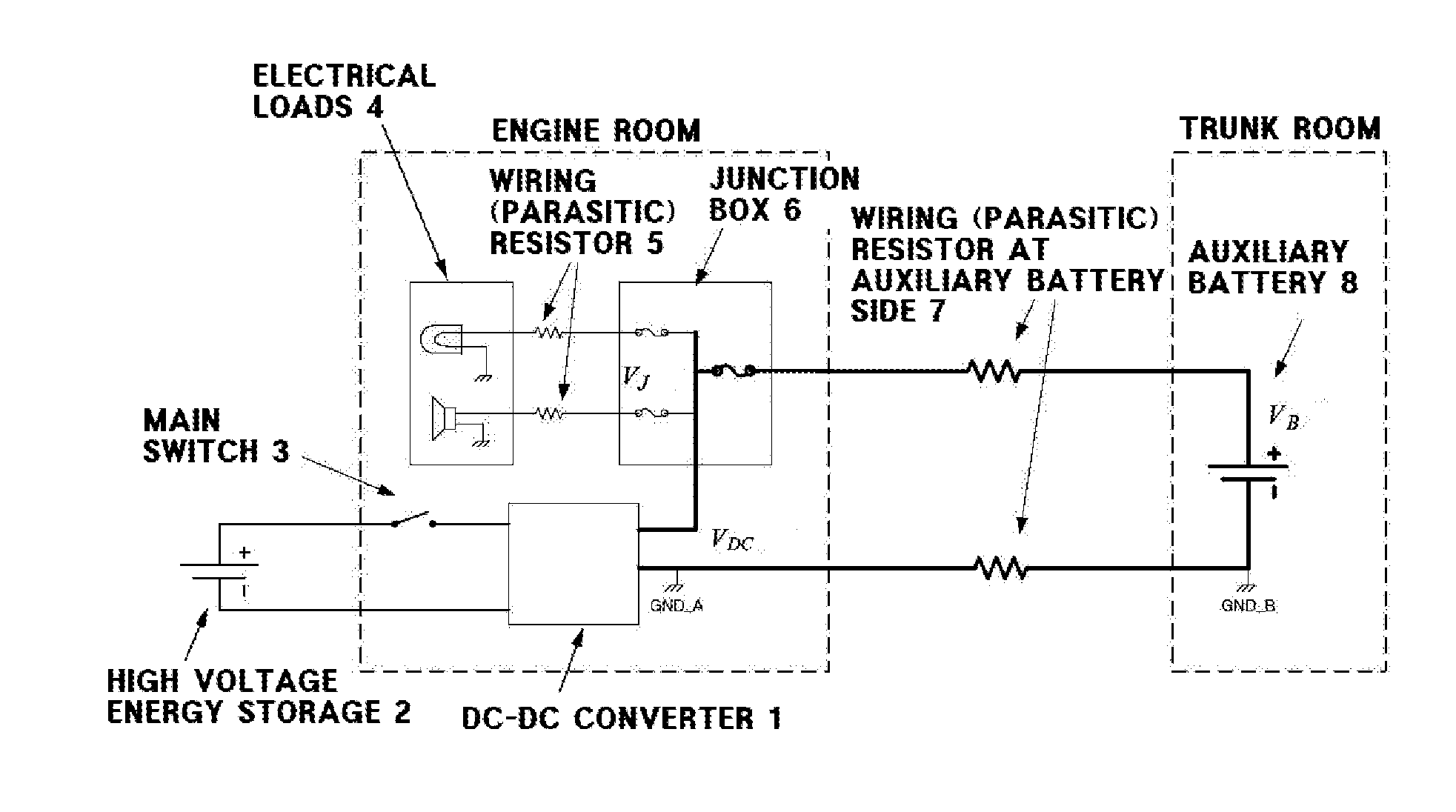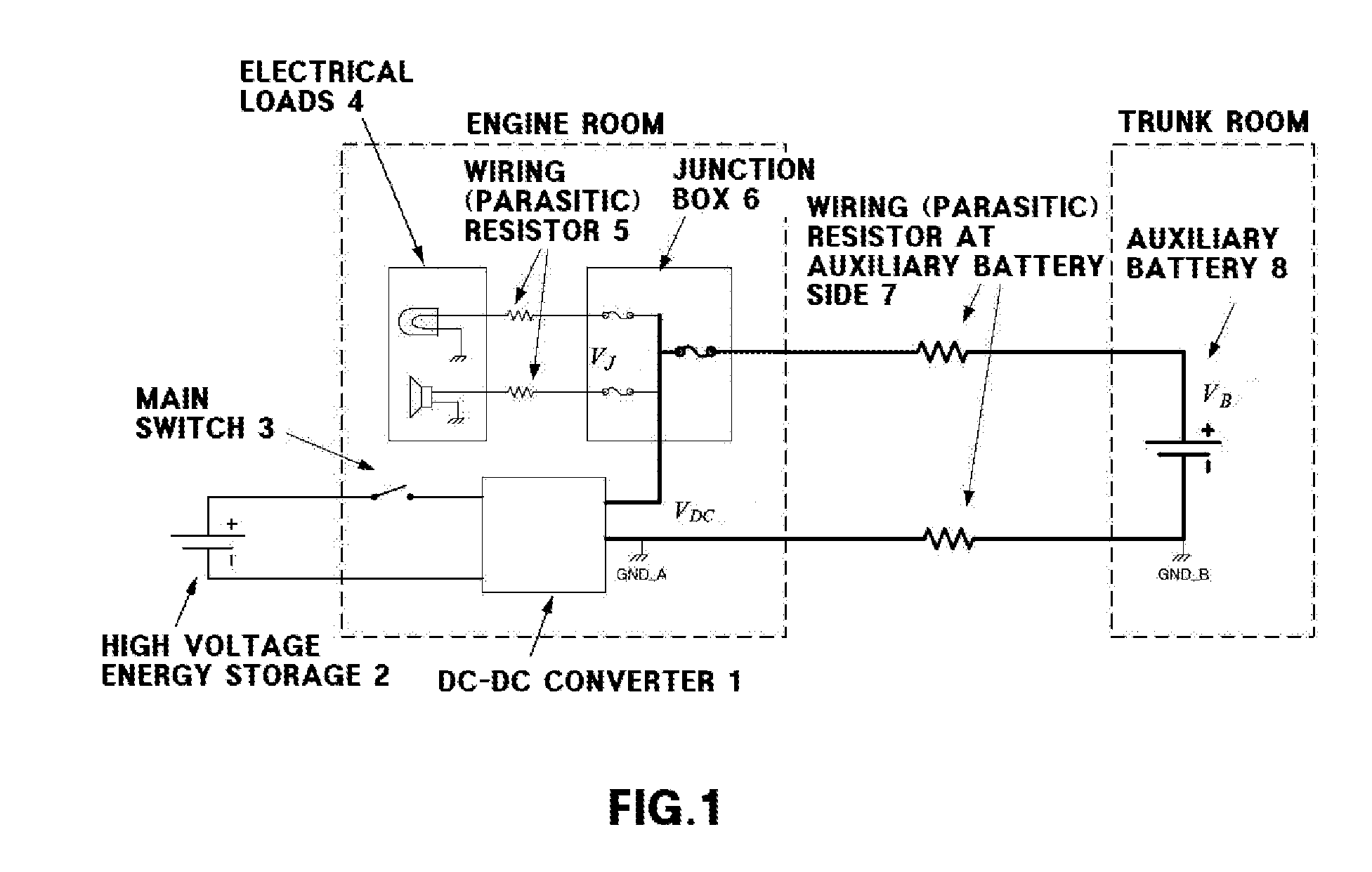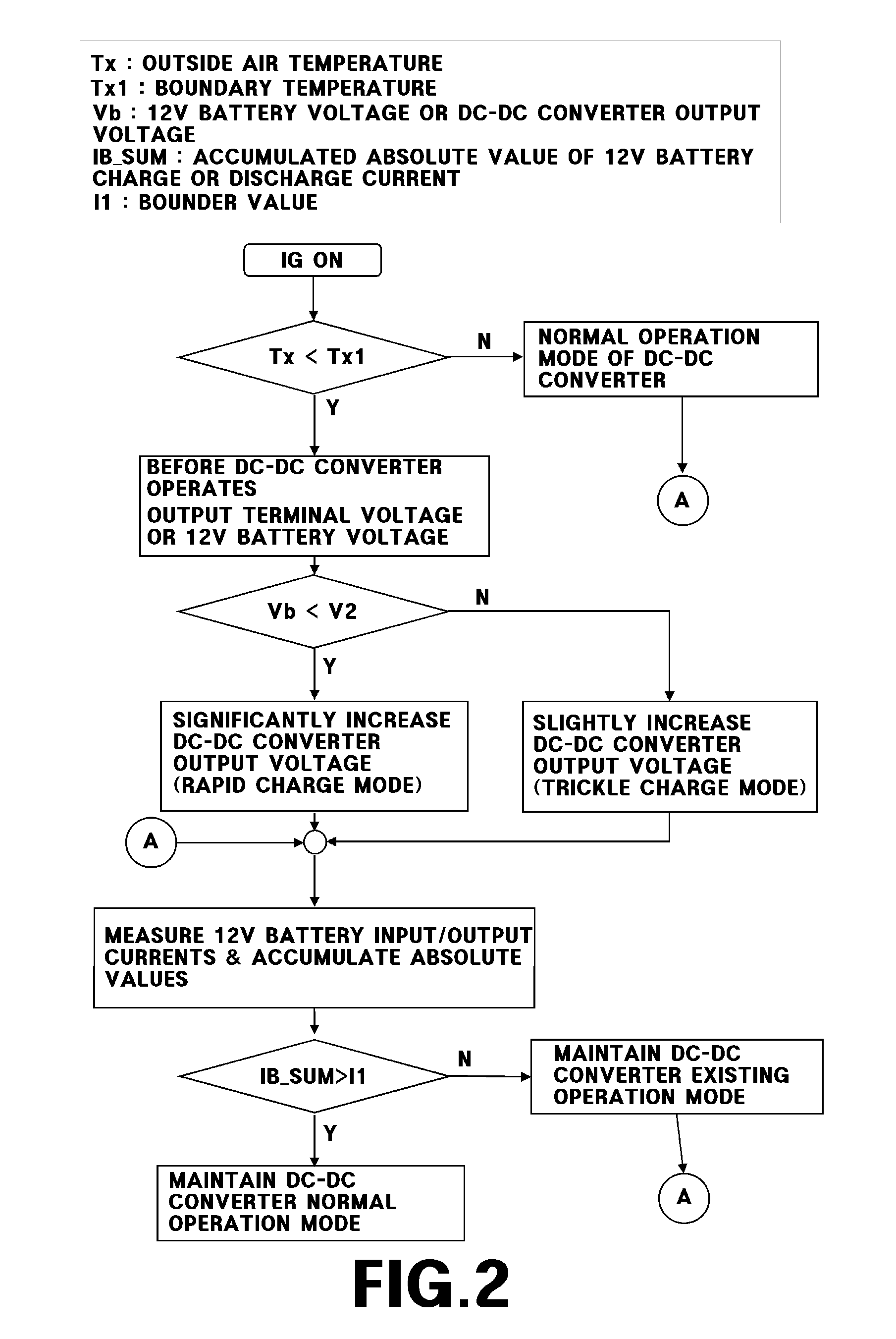Method for controlling charging voltage of 12v auxiliary battery for hybrid vehicle
a technology for hybrid vehicles and auxiliary batteries, which is applied in the direction of electric energy management, climate sustainability, engine-driven generators, etc., can solve the problems of reducing the charging efficiency, reducing the quality of the vehicle, and reducing the electrical energy charged in the auxiliary battery, so as to improve the charging efficiency of the auxiliary battery and increase the output voltage of the dc-dc converter
- Summary
- Abstract
- Description
- Claims
- Application Information
AI Technical Summary
Benefits of technology
Problems solved by technology
Method used
Image
Examples
Embodiment Construction
[0033]Hereinafter reference will now be made in detail to various embodiments of the present invention, examples of which are illustrated in the accompanying drawings and described below. While the invention will be described in conjunction with exemplary embodiments, it will be understood that present description is not intended to limit the invention to those exemplary embodiments. On the contrary, the invention is intended to cover not only the exemplary embodiments, but also various alternatives, modifications, equivalents and other embodiments, which may be included within the spirit and scope of the invention as defined by the appended claims.
[0034]As mentioned above with reference to FIG. 1, in a system for charging a 12V auxiliary battery and supplying power to the electrical loads 4, the high voltage battery 2 is connected to the DC-DC converter 1 through the main switch 3, and the output terminal of the DC-DC converter 1 is connected to the 12V auxiliary battery 8 and the ...
PUM
 Login to View More
Login to View More Abstract
Description
Claims
Application Information
 Login to View More
Login to View More - R&D
- Intellectual Property
- Life Sciences
- Materials
- Tech Scout
- Unparalleled Data Quality
- Higher Quality Content
- 60% Fewer Hallucinations
Browse by: Latest US Patents, China's latest patents, Technical Efficacy Thesaurus, Application Domain, Technology Topic, Popular Technical Reports.
© 2025 PatSnap. All rights reserved.Legal|Privacy policy|Modern Slavery Act Transparency Statement|Sitemap|About US| Contact US: help@patsnap.com



